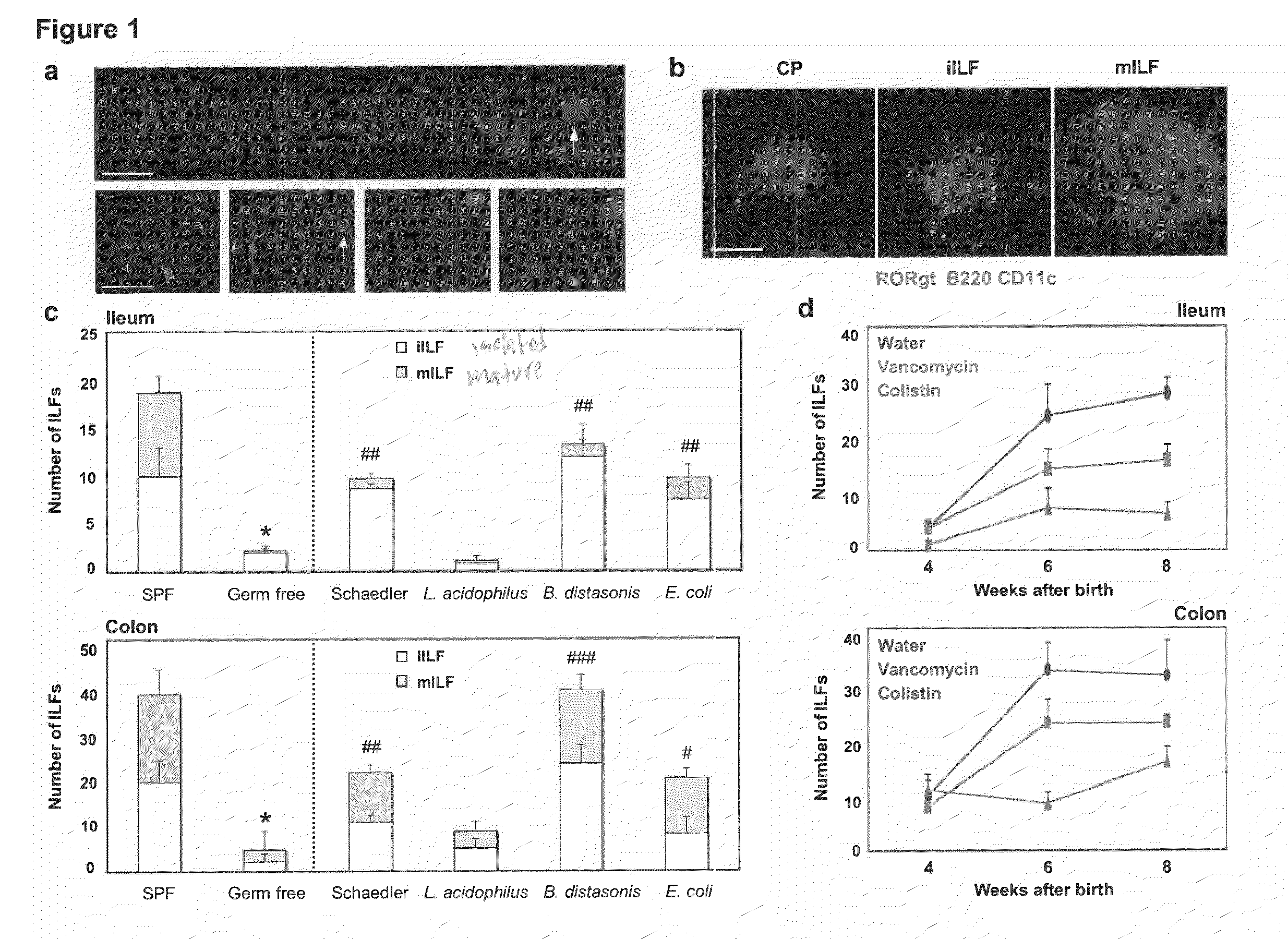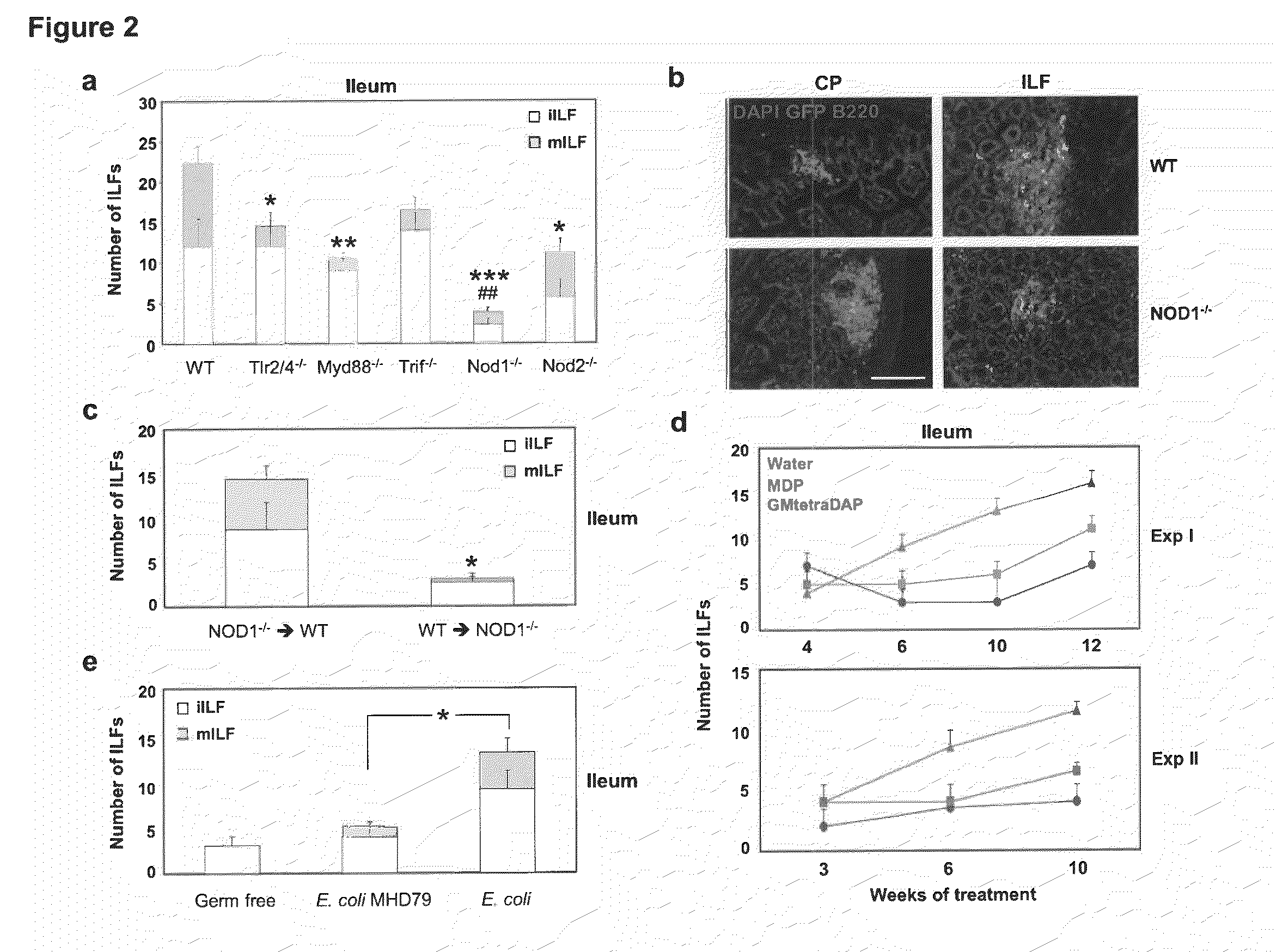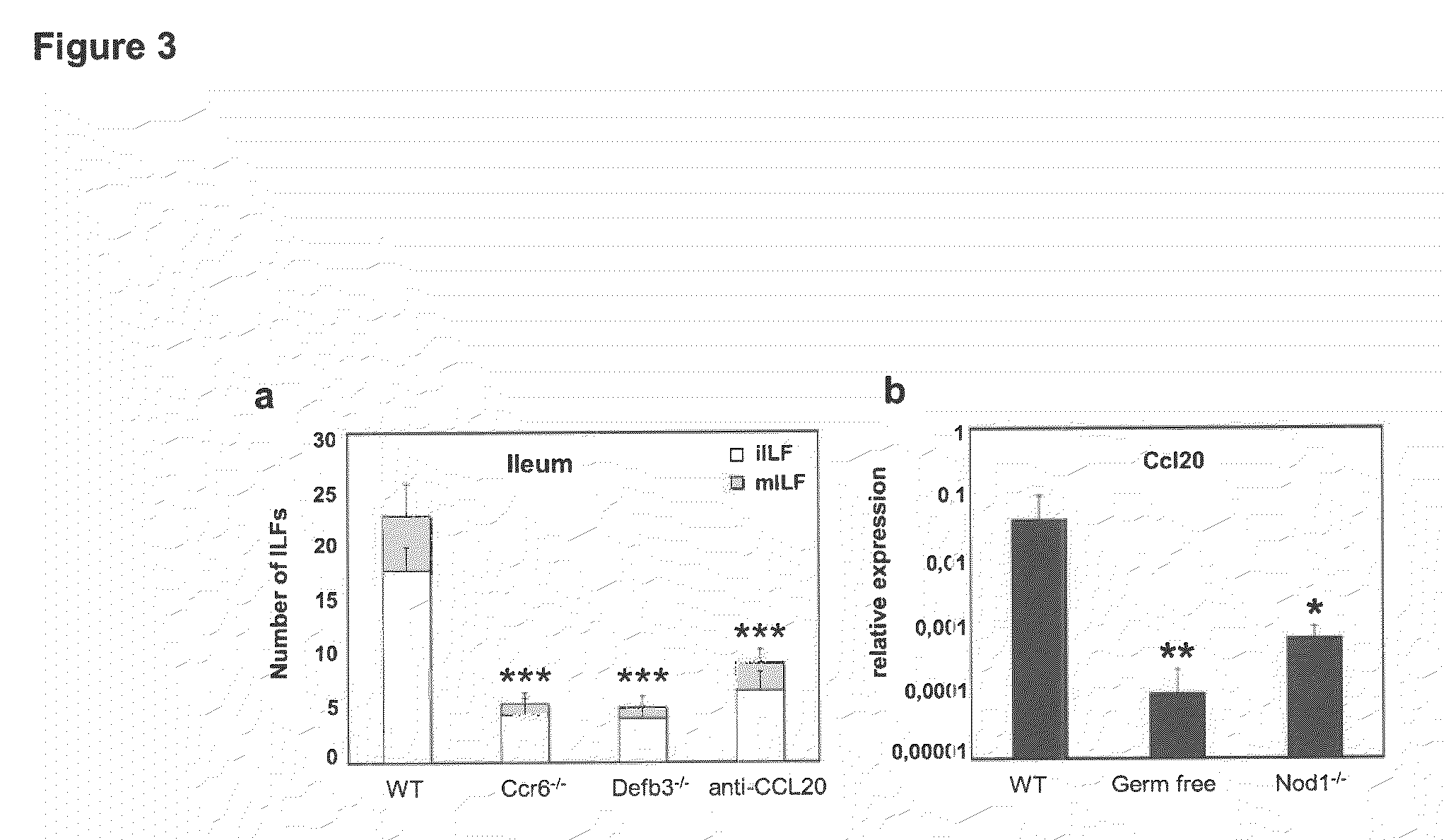Method for inducing lymphoid tissue and modulating intestinal homeostasis
a lymphoid tissue and homeostasis technology, applied in the field of inducing lymphoid tissue and modulating intestinal homeostasis, can solve the problems of intestinal homeostasis disruption and subsequent development of disorders, and achieve the effects of restoring homeostasis, modulating homeostasis, and increasing host immune responses
- Summary
- Abstract
- Description
- Claims
- Application Information
AI Technical Summary
Benefits of technology
Problems solved by technology
Method used
Image
Examples
example 1
Materials and Methods
[0048]Example 1 describes the materials and methods used in Examples 2 ff. The methods and materials referred to in Example 1 and the other examples by citation to particular references are specifically incorporated by reference to the pertinent subject matter described by each cited reference.
[0049]Mice. BAC-transgenic Rorc(γt)GfpTG mice were generated as described previously31. The coding sequence for EGFP, including the stop codon, was inserted into exon 1 of Rorc(γt) in place of the endogenous ATG translation start codon, on a 200 kb BAC (Invitrogen) carrying at least 70 kb of sequence upstream of the Rorc(γt) translation start site. Germfree mice of the C3H / HeOrl background (CDTA, Orléans) were bred and maintained at the Institut Pasteur. MyD88-, TRIF-, TLR2- or TLR4-deficient mice were obtained from Dr. S. Akira and backcrossed at least for 8 generations into C57 / B16J background. NOD1 (card4− / −)-deficient mice were generated by Millennium Pharmaceuticals, ...
example 2
Visualization of CPs and ILFs
[0059]Fetal LTi cells and LTi-like cells in CPs express the nuclear hormone receptor RORγt, which is required for the generation of LTi and CP cells and the development of secondary lymphoid tissues and ILFs2,6,10. The extensive network of CPs and ILFs was visualized in transgenic mice expressing the enhanced green fluorescent protein EGFP under control of the Rorc(γt) locus (Rorc(γt)-GfpTG mice) on a bacterial artificial chromosome (BAC) (FIG. 1a). CPs contain mostly RORγt+ LTi cells and a smaller population of dendritic cells (DCs)6, whereas ILFs constitute a continuum of structures harboring increasing numbers of B cells (FIG. 1b)5, previously grouped into immature ILFs (iILFs) that harbor relatively few B cells, and mature ILFs (mILFs) that form an organized B cell follicle11. As shown in Supplementary FIG. 1a, the number of CPs was highest in the proximal intestine, whereas ILFs, in particular mILFs, were most prominent in the distal ileum and the c...
example 3
ILF Formation
[0062]In order to identify which component of the intestinal flora induces the formation of ILFs, adult germfree mice were first reconstituted with a cocktail of bacterial strains including E. coli and members of the Altered Schaedler's Flora (ASF) (Supplementary FIG. 2), derived the normal commensal bacterial flora13. After 8 weeks, significant numbers of ILFs were found in the ileum and the colon (FIG. 1c), demonstrating that a restricted set of commensal bacteria species, devoid of invasive bacteria or pathogens, can induce the formation of ILFs. In these experimental conditions however, ileal ILFs failed to mature to the same extent as in normal specific pathogen-free (SPF) animals, suggesting that additional commensal microorganisms are required for full maturation, or that the experimental colonization protocol used here in adult mice does not fully replicate natural colonization occurring in the ileum of newborn animals.
PUM
| Property | Measurement | Unit |
|---|---|---|
| length | aaaaa | aaaaa |
| diameter | aaaaa | aaaaa |
| temperature | aaaaa | aaaaa |
Abstract
Description
Claims
Application Information
 Login to View More
Login to View More - R&D
- Intellectual Property
- Life Sciences
- Materials
- Tech Scout
- Unparalleled Data Quality
- Higher Quality Content
- 60% Fewer Hallucinations
Browse by: Latest US Patents, China's latest patents, Technical Efficacy Thesaurus, Application Domain, Technology Topic, Popular Technical Reports.
© 2025 PatSnap. All rights reserved.Legal|Privacy policy|Modern Slavery Act Transparency Statement|Sitemap|About US| Contact US: help@patsnap.com



